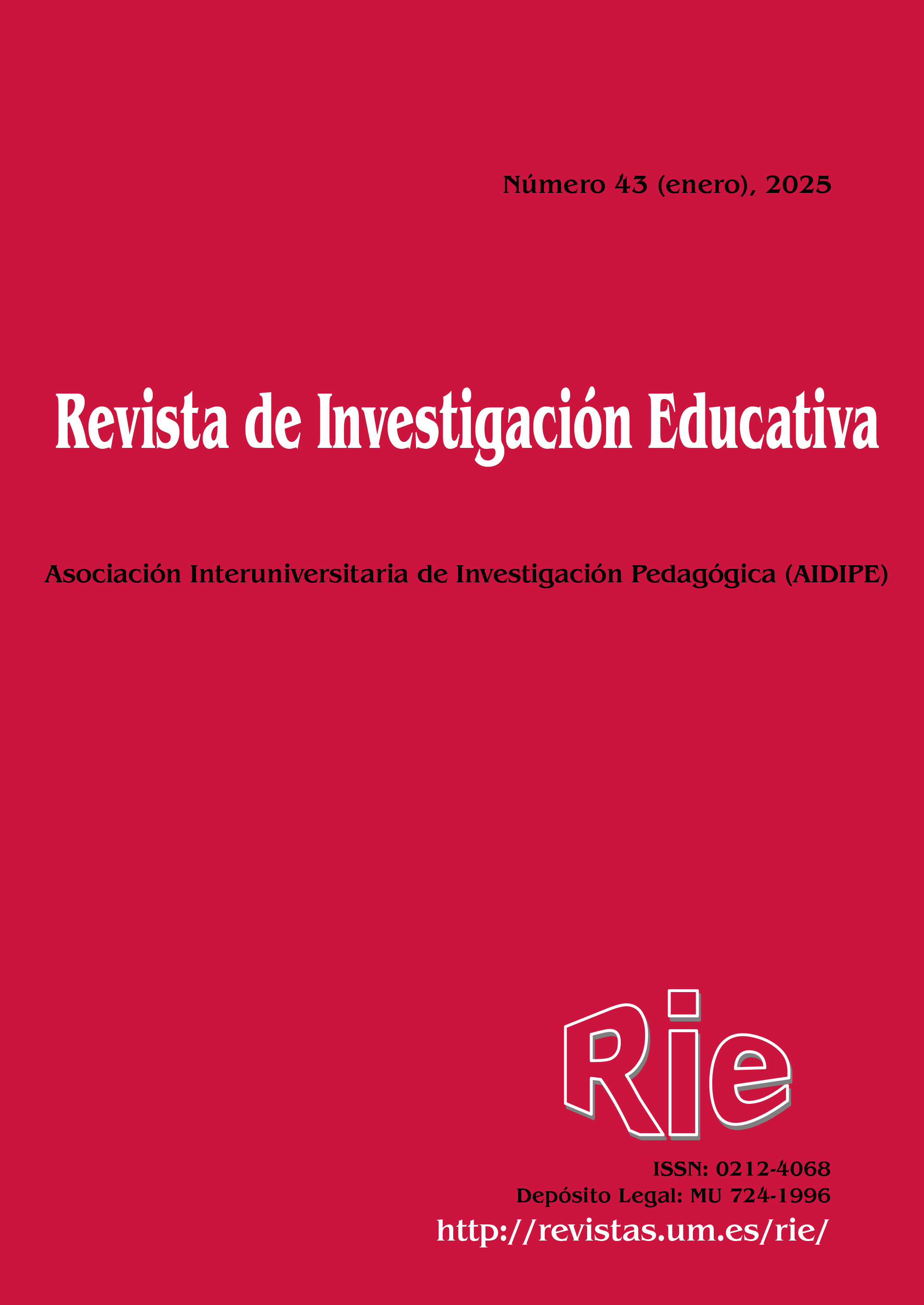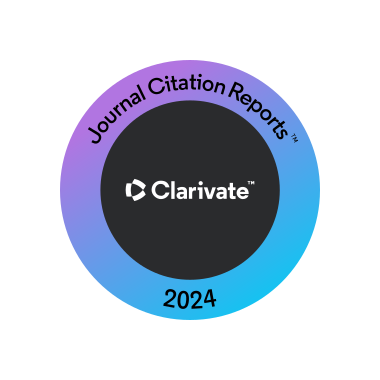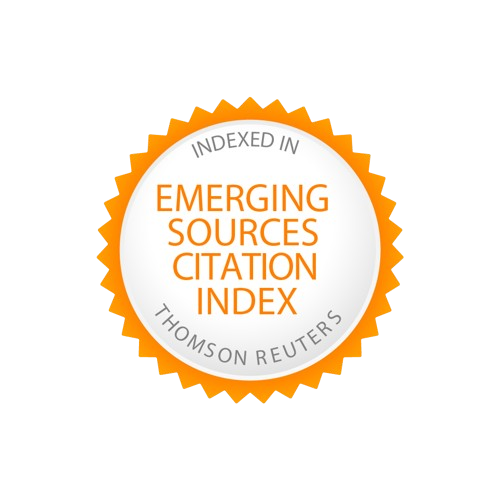Analysis of Secondary School Students' Perception of Scientists and its Impact in STEM Education with a Gender Perspective
Resumen
El declive del interés del alumnado por cursar estudios postobligatorios en el ámbito STEM radica en las actitudes negativas hacia las materias de ciencia y tecnología (“CyT”), que han ido desarrollando durante la educación secundaria, y se atribuye, entre otras causas, a la ima-gen estereotipada de la CyT, concretamente a visión distorsionada del trabajo científico y sus profesionales. Este artículo analiza narraciones construidas por alumnado de secundaria sobre la vida de un científico y una científica para esclarecer la imagen que presentan sobre los/las profesionales del ámbito científico-tecnológico y su trabajo. Se llevó a cabo un análisis de contenido de los relatos siguiendo una perspectiva de género para determinar las similitudes y diferencias existentes entre el alumnado femenino y masculino en cuanto a la percepción sobre el trabajo científico y sus profesionales. El análisis concluyó que el alumnado percibe como cua-lidad principal de los/las científicos/científicas la inteligencia y el interés innato por su campo de estudio; e imaginan al trabajo científico como muy exigente, el cual requiere compromiso, dedicación y esfuerzo. En un plano personal, el alumnado concibe a estos/estas profesionales como personas sociables, lo que significa que la imagen socialmente aceptada de la ciencia “folk” está difuminándose. Finalmente, el estudio concluye que el alumnado no sólo otorga un papel central a las familias en el proceso de elección de estudios; sino que también reconocen la existencia de barreras, no relacionadas con factores internos – inteligencia, habilidad o compromiso – sino con factores sociales, que frenan el desarrollo profesional de las científicas.
Descargas
-
Resumen815
-
PDF 902
-
PDF902
Citas
Andréu, J. (2002). Las técnicas de análisis de contenido: Una revisión actualizada. Fundación Centro de Estudios Andaluces, Universidad de Granada.
Archer, L., & DeWitt, J. (2015). Science aspirations and gender identity: Lessons from de ASPIRES project. In E. Henriksen, J. Dillon, J. Ryder (eds), Under-standing student participation and choice in science and technology education (pp. 89-102), Springer, https://doi.org/10.1007/978-94-007-7793-4_6
Archer, L., DeWitt, J., Osborne, J., Dillon, J., Willis, B., & Wong, B. (2010). “Doing” science versus “being a scientist”: Examining 10/11-year-old schoolchildren’s constructions of science through lens of identity. Science Education 94(4), 617-639. https://doi.org/10.1002/sce.20399
Ardila, E. E., & Rueda Arenas, J.F. (2013). La saturación teórica en la teoría fundamentada: Su delimitación en el análisis de trayectorias de vida de víctimas del desplazamiento forzado en Colombia. Revista Colombiana de Sociología 36(2), 93–114. https://repositorio.unal.edu.co/handle/unal/74166
Arias-Rodríguez, A., & Sánchez-Bello, A. (2022). Informal learning with a gender perspective transmitted by influencers through content on YouTube and Instagram in Spain. Social Sciences, 11(8), 341. https://doi.org/10.3390/socsci11080341
Bernard, P., & Dudek, K. (2017). Revisiting students’ perceptions of research scientists – outcomes of an indirect draw-a-scientist test (InDAST). Journal of Baltic Science Education, 16(4), 562–575. https://doi.org/10.33225/jbse/17.16.56
Bogdan, R. T., Greca, M. I., & Orozco-Gómez, M. L. (2018). Una revisión del protocolo Draw-a-scientist-test (DAST). Revista Eureka sobre Enseñanza y Divulgación de las Ciencias, 15(3), 1-19. https://doi.org/10.25267/Rev_Eureka_ensen_divulg_cienc.2018.v15.i3.3104
Bozzato, P., Fabris, M. A., & Longobardi, C. (2021). Gender, stereotypes and grade level in the draw-a-scientist test in Italian schoolchildren. International Journal of Science Education, 43(16), 2640-2662. https://doi.org/10.1080/09500693.2021.1982062
Chambers, D. W. (1983). Stereotypic images of the scientist: The draw-a-scientist test. Science Education, 67(2), 255–265. https://doi.org/10.1002/sce.3730670213
Chauke, T. A. (2022). Gender Differences in Determinants of Students’ Interest in STEM Education. Social Sciences, 11(11), 534. https://doi.org/10.3390/socsci11110534
Cobreros, L., Galindo, J., & Raigada, T. (2024). Mujeres en STEM. Desde la educación básica hasta la carrera laboral. EsadeEcPol - Center for Economic Policy. https://www.esade.edu/ecpol/wp-content/uploads/2024/03/Mujeres-en-STEM-2024-1.pdf
Creswell, J. W. (2013). Qualitative inquiry research design: Choosing among five approaches (3rd ed.). SAGE Publications.
Cundiff, J. L., Vescio, T. K., Loken, E., & Lo, L. (2013). Do gender-science stereotypes predict science identification and science career aspirations among undergraduate science majors? Social Psychology of Education, 16, 541–554. https://doi.org/10.1007/s11218-013-9232-8
Denzin, N. K., & Lincoln, Y. S. (2011). The SAGE Handbook of Qualitative Research (4th ed.). SAGE Publications.
Eccles, J. S., & Wigfield, A. (2002). Motivational beliefs, values and goals. Annual Review of Psyschology, 53, 109-132. http://dx.doi.org/10.1146/annurev.psych.53.100901.135153
Gibson, H. L., & Chase, C. (2002). Longitudinal impact of an inquiry-based science program in middle school student’s attitudes towards science. Science Education, 86(5), 693-705. https://doi.org/10.1002/sce.10039
Goetz, J., & LeCompte, M. (1988). Etnografía y diseño cualitativo en investigación educativa. Morata.
Fernández, I., Gil. D., Carrascosa, J., Cachapuz, A., & Praia, J. (2002). Visiones deformadas de la ciencia transmitidas por la enseñanza. Enseñanza de las ciencias 20 (3), 477-488. https://doi.org/10.5565/rev/ensciencias.3962
Ferguson, S. L., & Lezzote, S. M. (2020). Exploring the state of science stereotypes: Systematic review and me-ta-analysis of the draw-a-scientist checklist. School Science and Mathematics, 120(1), 55–65. https://doi.org/10.1111/ssm.12382
Finson, K. D. (2002). Drawing a scientist: What we do and do not know after fifty years of drawings. School Science and Mathematics, 102(7), 335–345. https://doi.org/10.1111/j.1949-8594.2002.tb18217.x
Flick, U. (2012). Introducción a la Investigación Cualitativa. Morata.
Halim L., Abd Rahman N., Zamri R., & Mohtar, L., (2018), The roles of parents in cultivating children’s interest towards science learning and careers. Kasetsart Journal of Social Sciences, 39(2), 190–196. https://doi.org/10.1016/j.kjss.2017.05.001
Holmegaard, H. T., Madsen, L. M., & Ulriksen, L. (2014). To choose or not to choose science: constructions of desirable identities among young people considering a STEM higher education programme. International Journal of Science Education, 36(2), 186-215. https://doi.org/10.1080/09500693.2012.749362
Hwang, S. (2007). Utilizing qualitative data analysis software: A review of ATLAS.ti. Social Science Computer Review, 26(4), 519–27. https://doi.org/10.1177/0894439307312485
Iglesias, A., & Sánchez-Bello, A. (2008). Currículum oculto en el aula, estereotipos en acción. In R. Cobo (ed), Educar en la Ciudadanía: Perspectivas Feministas (pp. 123–150). La Catarata,.
Koening, A. M., & Eagly, A. H. (2014). Evidence for the social role theory of stereotype content: Observations of groups’ roles shape stereotypes. Journal of Personality and Social Psychology, 107(3), 371-392. https://doi.org/10.1037/a0037215
Lane, K. A., Goh, J. X., & Driver-Linn, E. (2012). Implicit science stereotypes mediate the relationship between gender and academic participation. Sex Roles: A Journal of Research, 66, 220–234. http://dx.doi.org/10.1007/s11199-011-0036-z
Losh, S. C., Wilke, R., & Pop, M. (2008). Some Methodological Issues with “Draw a Scientist Tests” among Young Children. International Journal of Science Education, 30(6), 773-792. https://doi.org/10.1080/09500690701250452
Mead, M., & Métraux, R. (1957). Image of the scientist among high-school students: A pilot study. Science, 126(3270), 384–390. https://doi.org/10.1126/science.126.3270.384
Mérida-Serrano, R., González-Alfaya, M. E., Olivares-García, M. A., Muñoz-Moya, M., & Rodríguez-Carrillo, J. (2023). Evaluación del impacto de un programa de mujeres y ciencia en el alumnado de Educación Infantil. Revista Complutense de Educación, 34(1), 21-33. https://doi.org/10.5209/rced.76691
Miles, M., Huberman, M., & Saldaña, J. (2014). Qualitative Data Analysis. A Methods Sourcebook (3rd). SAGE Publications.
Miller, D. I., Nolla, K. M., Eagly, A. H., & Uttal, D. H. (2018). The Development of Children’s Gender-Science Stereotypes: A Meta-analysis of 5 Decades of U.S. Draw-A-Scientist Studies. Child Development, 89(6), 1943–1955. https://doi.org/10.1111/cdev.13039
Ministerio de Educación y Formación Profesional. (2022). Enseñanzas no universitarias. Alumnado matriculado. https://www.educacionyfp.gob.es/servicios-al-ciudadano/estadisticas/no-universitaria/alumnado/matriculado.html
Ministerio de Universidades (2022). Home Page. Available online: https://www.universidades.gob.es/estadistica-de-estudiantes/ (accessed on 10 October 2024).
Murphy, C., & Beggs, J. (2003). Children perceptions of school science. School Science Review, 84(308), 109-116.
Reinhold, S., Holzberge, D. & Seidel, T. (2018). Encouraging a career in science: a research review of secondary schools’ effects on students’ STEM orientation. Studies in Science Education, 54(1), 69–103. https://doi.org/10.1080/03057267.2018.1442900
Regan, E., & DeWitt, J. (2015). Attitudes, Interest and Factors Influencing STEM Enrolment Behaviour: An Overview of Relevant Literature. In: Henriksen, E., Dillon, J., Ryder, J. (eds), Understanding Student Participation and Choice in Science and Technology Education (pp. 63-88). Springer. https://doi.org/10.1007/978-94-007-7793-4_5
Rocha, T. E. S. (2009). Desarrollo de la identidad de género desde una perspectiva psico-socio-cultural: Un recorrido conceptual. Revista Interamericana de Psicología, 43(2), 250-259. https://www.redalyc.org/articulo.oa?id=28412891006
Rodari, P. (2007). Science and scientists in the drawings of European Children. Journal of Science Communication, 6(3), 1-12. http://dx.doi.org/10.22323/2.06030304
Rodríguez, G., Gil, J., & García, E. (1996). Metodología de la investigación cualitativa. Ediciones Aljibe.
Ruiz-Mallén, I., & Escalas, M. T. (2012). Scientists seen by children: A case study in Catalonian, Spain. Science Communication, 34(4), 520-545. https://doi.org/10.1177/1075547011429199
Sandín, M. P. E. (2003). Investigación cualitativa en educación: Fundamentos y tradiciones. McGrawHill.
She, H. C. (1998). Gender and grade level differences in Taiwan students’ stereotypes of science and scientists. Research in Science and Technological Education, 16(2), 125–135. https://doi.org/10.1080/0263514980160203
Torres, J. S. (2017). Políticas educativas y construcción de personalidades neoliberales y neocolionalistas. Morata.
Ulriksen, L., Madsen, L.M., & Holmegaard, H.T. (2015). Why Do Students in STEM Higher Education Programmes Drop/Opt Out? – Explanations Offered from Research. In E. Henriksen, J. Dillon, J. Ryder (eds), Understanding Student Participation and Choice in Science and Technology Education (pp. 203-218). Springer. https://doi.org/10.1007/978-94-007-7793-4_13
Vázquez-Alonso, A., & Mas, M. A. M. (2005). La ciencia escolar vista por los estudiantes. Bordón, Revista De Pedagogía, 57(5), 125-143. https://recyt.fecyt.es/index.php/BORDON/article/view/40802
Wang, X. (2013). Why students choose STEM majors: Motivation, high school learning, and postsecondary context of support. American Educational Research Journal, 50(5), 1081 – 1121. https://doi.org/10.3102/0002831213488622
Derechos de autor 2024 Revista de Investigación Educativa

Esta obra está bajo una licencia internacional Creative Commons Atribución-NoComercial-SinDerivadas 4.0.
Las obras que se publican en esta revista están sujetas a los siguientes términos:
1. El Servicio de Publicaciones de la Universidad de Murcia (la editorial) conserva los derechos patrimoniales (copyright) de las obras publicadas, y favorece y permite la reutilización de las mismas bajo la licencia de uso indicada en el punto 2.
2. Las obras se publican en la edición electrónica de la revista bajo una licencia Creative Commons Reconocimiento-NoComercial-SinObraDerivada 3.0 España (texto legal). Se pueden copiar, usar, difundir, transmitir y exponer públicamente, siempre que: i) se cite la autoría y la fuente original de su publicación (revista, editorial y URL de la obra); ii) no se usen para fines comerciales; iii) se mencione la existencia y especificaciones de esta licencia de uso.
3. Condiciones de auto-archivo. Se permite a los/as autores/as a difundir electrónicamente las versiones pre-print (versión antes de ser evaluada) y/o post-print (versión evaluada y aceptada para su publicación) de sus obras antes de su publicación, ya que favorece su circulación y difusión más temprana y con ello un posible aumento en su citación y alcance entre la comunidad académica.









